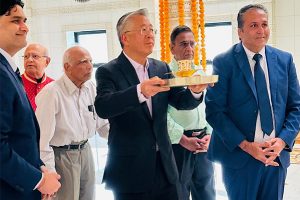How does one learn to ride a bicycle? The trick is to mount one, start to peddle, fall off a few times before learning to balance oneself and making it a joyride. Same is the case with learning to swim or learning not to play with fire or sharp objects.
In a nutshell, the best way to learn something is to experience it firsthand.
The activity of engaging various senses such as seeing, hearing, listening and feeling in order to learn something new and which helps one relate is called ‘Experiential Learning’. It provides a holistic model to the process of learning which is consistent with existing knowledge on how people learn and grow.
The Experiential Learning movement, which started in the United States in the mid-nineteenth century, was an attempt to shift from formal education to experience-based approach. It tried to change the teachers-talk, students-listen approach to a more interactive one with the introduction of laboratories, applied studies and clinical experiences. Off-campus experiences were introduced in the 20th century in addition to classroom experiences. Slowly, it started gaining popularity and is now getting trickled into mainstream education system in many countries.
With rising popularity amongst educational institutions and policymakers, experiential learning is said to play a crucial role in the evolution of education because of its various benefits like:
1. Real World Adaptation – It is easier to grasp facts around us through experience. For eg: Students who understand the sensations of hot and cold can understand the concept of touch, and go on to build their understanding of these old concepts to have new ideas. Like vibration.
2. Higher engagement levels – Emphasis on experience and practice encourages and motivates students to participate and engage in the application of theoretical concepts. Learning levels are, therefore, high as compared to a traditional textbook reading class.
3. Enhances Learning Outcomes – Students engage in critical thinking, acquire problem-solving skills and engage in decision making in the process of experiential learning. These experiences require them to be in a real-world environment thus strengthening their emotional and cognitive standpoints.
4. Increase in Knowledge Retention – Students have the capacity to learn successfully when the information is associated with values and feelings. Each student’s learning and understanding is directed by their past experiences and therefore will generate different results making it more personal and long lasting.
5. Develops Life Skills – Experiential learning leads to the development of skills for a lifetime. By assisting in the acquisition of essential skills and encouraging students to reflect, conceptualize, and plan for next steps, experiential learning helps to build leaders of tomorrow.
Educational institutions have been extremely innovative in the way they have used experiential learning to empower teachers and students to create more interactive, engaging and flexible learning materials. The adoption of a dynamic, hands-on approach to teaching encourages active participation and creativity along with developing important mental capabilities such as spatial awareness and critical thinking in young learners.
Premier international schools that encourage learning through interaction, thinking out of the box and innovation have built skill-based labs to impart experiential learning not only in terms of academics but also in a variety of other sectors like Culinary, Maker Spaces, Radio and TV. For senior students, there are initiatives like the Leadership Lecture Series which helps students learn from other successful people’s experiences and Entrepreneurship Bootcamps that give them access to industry leaders and teach them to be corporate ready at a very young age.
Even in India, where the education system is heavily tilted towards rote learning, changes are slowly taking place. The Central Board of Secondary Education (CBSE) Board is taking effective measures to inculcate application-based learning. In 2013, when the board introduced Open Text Book Assessment for class 9 and 11, the initiative received an overwhelming response from students as well as teachers and educational institutions as it focused more on learning and understanding than just reading a textbook. Next move was to introduce giving away formulas on Board question papers. All this was considered a step further towards eradicating the practice of rote learning and encouraging learning through experience.
Perhaps the only hiccup in Experiential Learning system is that, unlike rote learning, such a system may take weeks, months or even years to be imbibed in the minds of children. It is imperative for educational institutions to create an infrastructure that provides enough scope for experiential learning.
While technological evolutions continue to change business models and trends in the country, Experiential Learning should be backed by practical learning in order to create new methods for the constantly evolving education system. And it is very essential in a world where attention spans are limited to just 140 characters.
The author is Co-Founder & Executive Chairman, Global Schools Foundation











